Today Current Affairs: 26th November 2022 for UPSC IAS exams, State PSC exams, SSC CGL, State SSC, RRB, Railways, Banking Exam & IBPS, etc
Table of Contents
Leith’s Soft-shelled Turtle : Transfer From Appendix II to Appendix I
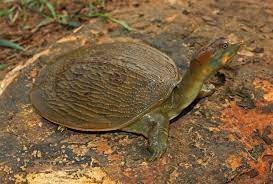
India’s proposal for transferring Leith’s Softshell Turtle (Nilssonia leithi) from Appendix II to Appendix I of the Convention on International Trade in Endangered Species of wild fauna and flora (CITES) has been adopted by the Conference of Parties (CoP) to CITES in its 19th Meeting at Panama.
- Leith’s Softshell Turtle is a large fresh water soft-shelled turtle which is endemic to peninsular India and it inhabits rivers and reservoirs.
- Distribution: Restricted to southern peninsular India (Andhra Pradesh, Karnataka, Kerala, Madhya Pradesh, Maharashtra, Orissa, and Tamil Nadu) in the Cauvery, Thungabhadra, Ghataprabha, Bhavani, Godavari, and Moyar drainages.
- The species has been subject to intensive exploitation over the past 30 years. It has been poached and illegally consumed within India.
- It has also been illegally traded abroad for meat and for its calipee.
- The population of this turtle species is estimated to have declined by 90% over the past 30 years such that the species is now difficult to find.
- It is classified as ‘Critically Endangered’ by the IUCN.
- It is listed on Schedule IV of the Wild Life (Protection) Act, 1972.
- The CITES Appendix I listing of this Turtle species would ensure that legal international trade in the species does not take place for commercial purposes.
- It would also ensure that international trade in captive-bred specimens only takes place from registered facilities and further that higher and more proportionate penalties are provided for illegal trade of the species.
Exercise ‘Samanvay 2022’:
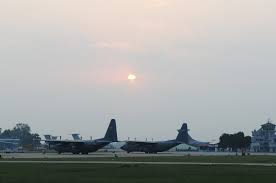
Indian Air Force is conducting the Annual Joint Humanitarian Assistance and Disaster Relief (HADR) Exercise ‘Samanvay 2022’ from 28 November 2022 to 30 November 2022 at Air Force Station Agra.
- It aims to assess the efficacy of institutional Disaster Management structures and contingency measures and involves static and flying displays of various HADR assets and a ‘Table Top Exercise’.
- Samanvay 2022 will promote a synergistic approach towards HADR by various national and regional stakeholders involved in Disaster Management including the Civil Administration, the Armed Forces, NDMA, NIDM, NDRF, DRDO, BRO, IMD, NRS and INCOIS.
- It is expected to contribute in the evolution of institutional frameworks for effective communication, interoperability, cooperation and their application for successful conduct of HADR.
- The exercise also aims to provide a unique platform for exchange of domain knowledge, experience and best practices with the participating ASEAN member countries.
Exercise Naseem Al Bahr 2022:
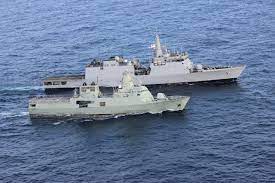
The Indian Navy’s guided missile stealth frigate, INS Trikand, offshore patrol vessel, INS Sumitra, and Maritime Patrol Aircraft -Dornier, participated in the 13th Edition of the Indian Navy (IN) – Royal Navy of Oman (RNO) bilateral exercise ‘Naseem Al Bahr’ (Sea Breeze).
- Ex-Naseem Al Bahr initiated in 1993, symbolises the long term strategic relationship between the two countries.
- This year marks 30 years of IN-RNO bilateral exercises.
- Oman is the first country in the Gulf Cooperation Council (GCC) which has been in conducting bilateral exercises with India jointly.
- Both countries already have Memorandums of Understanding (MoUs) including on defence cooperation, between the Coast Guards to prevent crime at sea, on maritime issues and a protocol between their respective air forces on Flight Safety Information Exchange.
Pradhan Mantri Fasal Bima Yojana : Updates
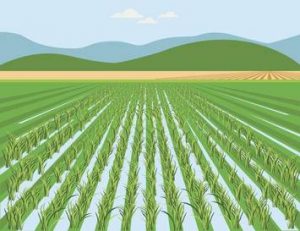
Union Ministry of Agriculture and Farmers Welfare stated that it is open to taking pro-farmer changes in Pradhan Mantri Fasal Bima Yojana (PMFBY) in response to the recent climate crisis and rapid technological advances.
- PMFBY Launched in 2016 and is being administered by the Ministry of Agriculture and Farmers Welfare.
- It replaced the National Agricultural Insurance Scheme (NAIS) and Modified National Agricultural Insurance Scheme (MNAIS).
- Farmers including sharecroppers and tenant farmers growing notified crops in the notified areas are eligible for coverage.
- Objectives:
- To provide insurance coverage and financial support to the farmers in the event of failure of any of the notified crops as a result of natural calamities, pests & diseases.
- To stabilize the income of farmers to ensure their continuance in farming.
- To encourage farmers to adopt innovative and modern agricultural practices.
- To ensure the flow of credit to the agriculture sector.
- There will be a uniform premium of only 2% to be paid by farmers for all Kharif crops and 1.5% for all Rabi crops. In the case of annual commercial and horticultural crops, the premium to be paid by farmers will be only 5%.
- Premium over and above these limits is shared by the Central and State Governments on 50:50 basis except in North Eastern Region where it is 90: 10.
- There is no upper limit on Government subsidies. Even if the balance premium is 90%, it will be borne by the Government.
- Earlier, there was a provision of capping the premium rate which resulted in low claims being paid to farmers.
- This capping has now been removed and farmers will get a claim against the full sum insured without any reduction.
Cryosphere Loss:
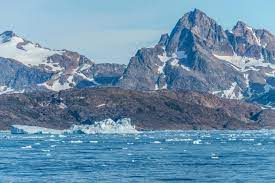
At COP27, a broad coalition of 18 governments joined together to create a new high-level group ‘Ambition on Melting Ice (AMI) on Sea-level Rise and Mountain Water Resources’.
- The “AMI” group aims to ensure impacts of cryosphere loss is understood by political leaders and the public, and not only within mountain and polar regions, but throughout the planet.
- The founding governments of the group include Chile (co-chair), Iceland (co-chair), Peru, Czech Republic, Nepal, Finland, Senegal, Kyrgyz Republic, Samoa, Georgia, Switzerland, New Zealand, Monaco, Vanuatu, Sweden, Tanzania, Liberia, Norway and Mexico.
Declaration of the Group:
- Climate change has already caused dramatic changes in the global cryosphere, Earth’s snow and ice regions.
- Lives and livelihoods are threatened by, and some already lost from, these changes. Indigenous peoples in both the Arctic and mountain regions have been among the earliest affected.
- The IPCC Sixth Assessment Cycle reports, including the Special Report on Ocean and Cryosphere in a Changing Climate, conclude that such changes in the cryosphere will worsen with each additional increment of global warming and greenhouse gas emissions in the atmosphere.
- The consequences will occur both within and far beyond those in polar and mountain regions.
- In polar fisheries, in addition to warming these include rapid acidification of polar oceans, which scientists say will reach a critical threshold at 450ppm – a level we are on track to reach in just 12 years.
Cryosphere:
- The cryosphere is the part of the Earth’s climate system that includes solid precipitation, snow, sea ice, lake and river ice, icebergs, glaciers and ice caps, ice sheets, ice shelves, permafrost, and seasonally frozen ground.
- The term “cryosphere” traces its origins to the Greek word ‘kryos’ for frost or ice cold.
- The cryosphere extends globally, existing seasonally or perennially at most latitudes, not just in the Arctic, Antarctic, and mountain regions, and in approximately one hundred countries.
- The largest continental ice sheets are found in Antarctica.
- Approximately 70% of the Earth’s freshwater exists as snow or ice.
Periodic Labour Force Survey : National Statistical Office
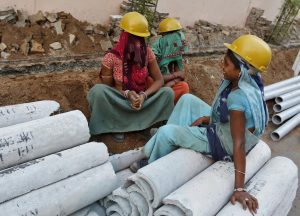
The National Statistical Office (NSO) has released the Periodic Labour Force Survey (PLFS).
- The unemployment rate in urban areas for persons aged above 15 eased to 7.2% in July-September 2022 from 9.8% in July-September 2021.
Findings of the PLFS (July-September 2022):
- The unemployment ratio is defined as the percentage of persons unemployed among the persons in the labour force.
- The unemployment rate was 6.6% for men and 9.4% for women (9.3% and 11.6% in July-September 2021).
- The WPR is defined as the percentage of employed persons in the population.
- The WPR in urban areas for persons aged 15 and above stood at 44.5% (42.3% in July-September 2021).
- The WPR among men was 68.6% and 19.7% among women (66.6% and 17.6% in 2021).
Labour Force Participation Rate (LFPR):
- It is defined as the percentage of persons in the labour force who are working or seeking or available for work in the population, in urban areas for persons aged 15 and above.
- It increased to 47.9% (46.9% in July-September 2021).
- The LFPR among men was 73.4% and 21.7% among women (73.5% and 19.9%, in July-September 2021).
Periodic Labour Force Survey:
- Considering the importance of the availability of labour force data at more frequent time intervals, the National Statistical Office (NSO), Ministry of Statistics & Programme Implementation launched the Periodic Labour Force Survey (PLFS) in April 2017.
National Milk Day 2022:
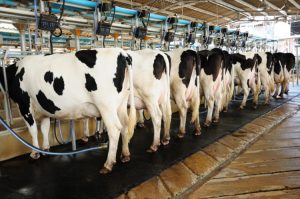
Department of Animal Husbandry to celebrate National Milk Day to commemorate 101st birth anniversary of the “Father of the White Revolution in India -Dr. Verghese Kurien
- National Milk Day is celebrated in India on November 26 to honour the memory of Dr Verghese Kurien, who is fondly known as the father of the White Revolution.
- Kurien was also called the Milkman of India as his ideas and efforts to build a system of farmer cooperatives helped transform the country from an importer of dairy products to the world’s largest milk producer.
- For his relentless service to the dairy and farming communities, Kurien was awarded the Ramon Magsaysay Award (1963), Padma Shri (1965), Padma Bhushan (1966), World Food Prize (1989) and Padma Vibhushan (1999).
- National Milk Day raises awareness about the need for milk in human lives.
- India is the world’s largest milk producer, with 22 percent of global production, followed by the United States of America, China, Pakistan and Brazil.
- According to the data available on the NDDB website, milk production in India has increased from 84.4 million tonnes in 2001-02 to 121.8 million tonnes in 2010-11 and 198.4 million tonnes in 2019-20.
- Since the 1970s, most of the expansion in milk production has been in South Asia, which is the main driver of milk production growth in the developing world.
International Electrotechnical Commission:
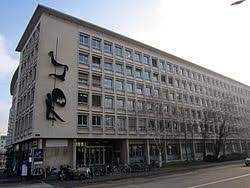
India wins the International Electrotechnical Commission (IEC) Vice Presidency and Strategic Management Board (SMB) Chair for the 2023-25 term.
- IEC is an international standard setting body that publishes international Standards for all electrical, electronic and related technologies.
- These are known collectively as “electrotechnology”.
- It is a global, not-for-profit membership organization that brings together 173 countries and coordinates the work of 20 000 experts globally.
- It was founded in London and held its first meeting on 26 and 27 June 1906.
- IEC Standards provide instructions, guidelines, rules or definitions that are then used to design, manufacture, install, test and certify, maintain and repair electrical and electronic devices and systems.
- Standardization Management Board (SMB) is an apex governance body of IEC responsible for technical policy matters.
PSLV-C54:

ISRO recently launched PSLV-C54 with Oceansat-3, 8 nano satellites.
- Satellites in PSLV-C54 includes EOS-06 (Oceansat-3) plus eight nano satellites (BhutanSat, ‘Anand’ from Pixxel, Thybolt, and Astrocast – four numbers from Spaceflight USA).
- ISRO Nano Satellite-2 for Bhutan (INS-2B) spacecraft is configured with INS-2 Bus. INS-2B will have two payloads namely NanoMx and APRS-Digipeater. NanoMx is a multispectral optical imaging payload developed by Space Applications Centre (SAC).
- The Anand Nano satellite is technology demonstrator to demonstrate the capabilities and commercial applications of miniaturized earth-observation camera for earth observation using a microsatellite in Low Earth Orbit.
- This is a three-axis stabilized satellite consisting of a satbus, accommodating all subsystems like telemetry, tele-command, Electrical Power system, Attitude Determination and Control System (ADCS), on-board computers etc.
- Astrocast, a 3U spacecraft is a technology demonstrator satellite for the Internet of Things (IoT) as the payload. There are 4 nos. of Astrocast Satellites in this mission. These spacecraft are housed within an ISISpace QuadPack dispenser.
- The dispenser protects the satellite from contamination.
- The Thybolt is a 0.5U spacecraft bus that includes a communication payload to enable rapid technology demonstration and constellation development for multiple users.
- It also demonstrates Store-and-Forward functionality for authorized users in the amateur frequency band. The satellites shall be deployed by using Dhruva Space Orbital Deployer to perform the specific mission operations for a minimum lifetime of 1 year




